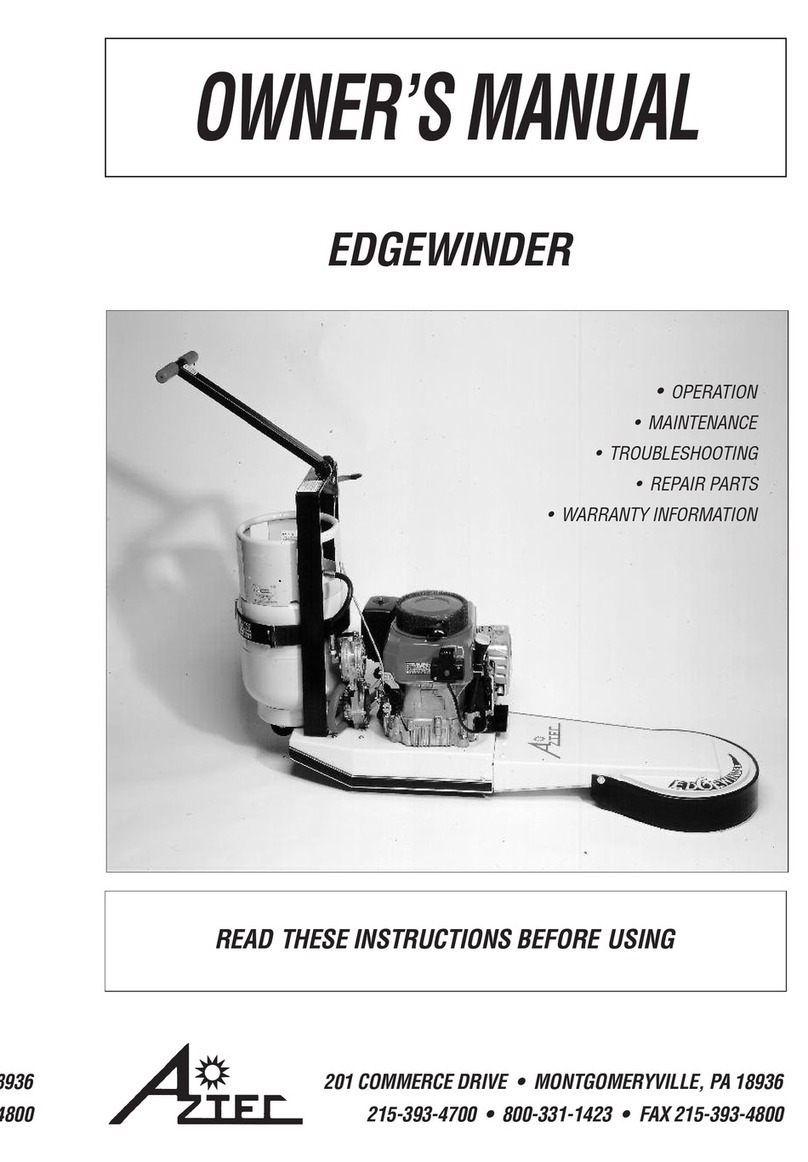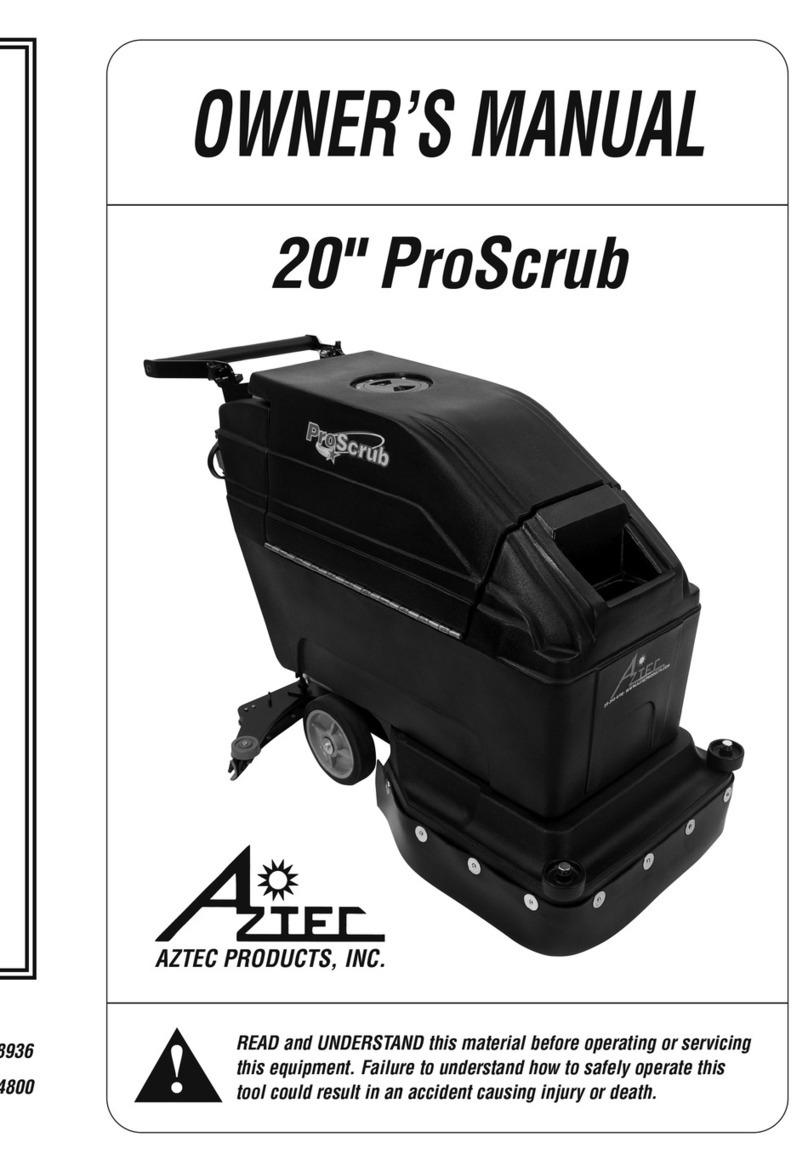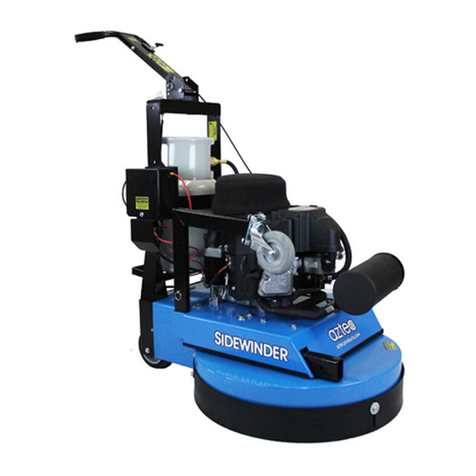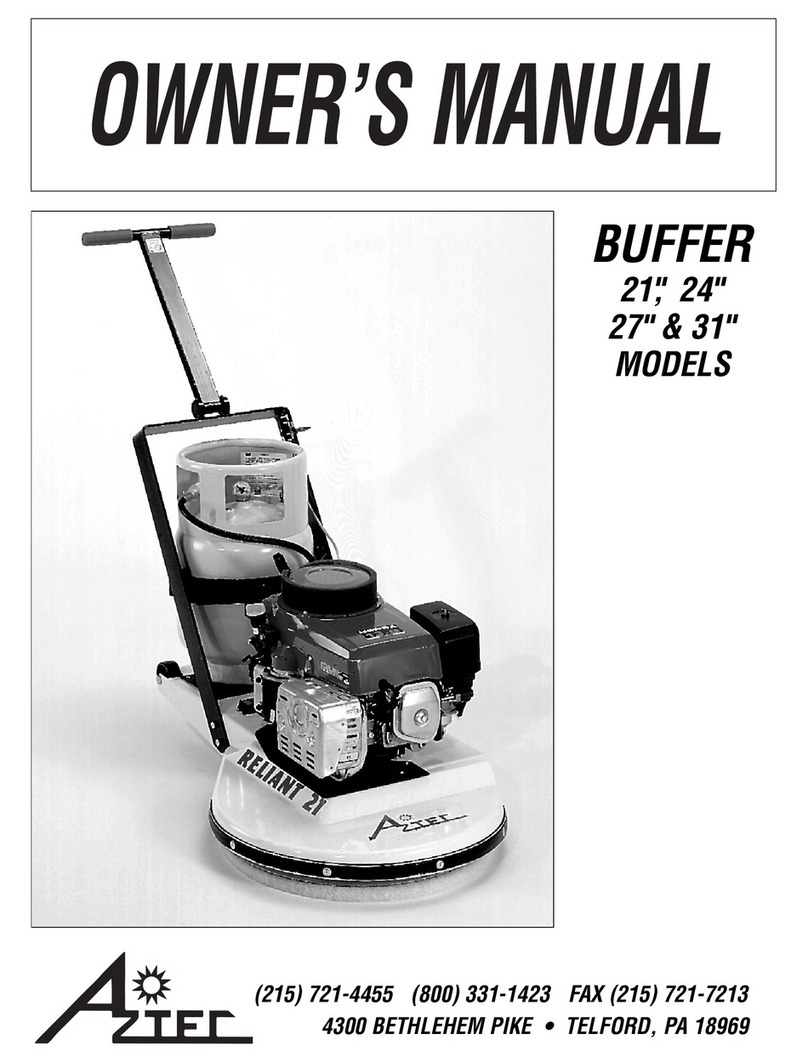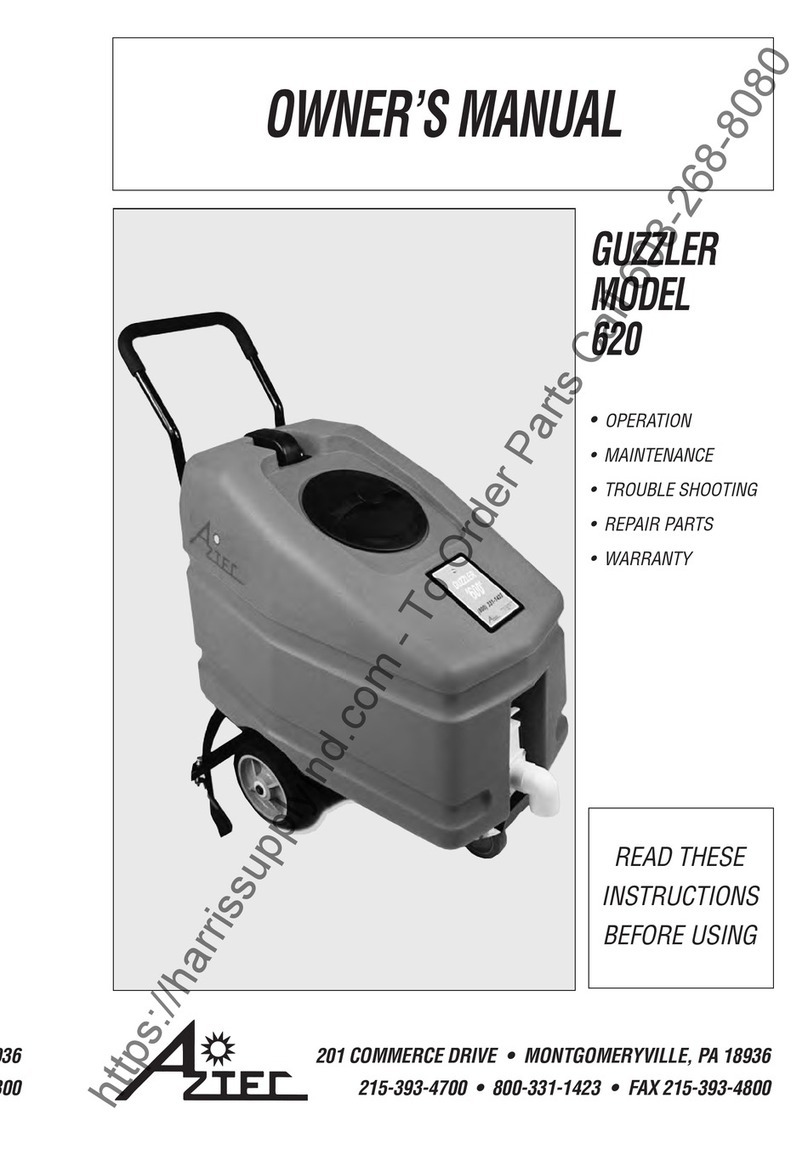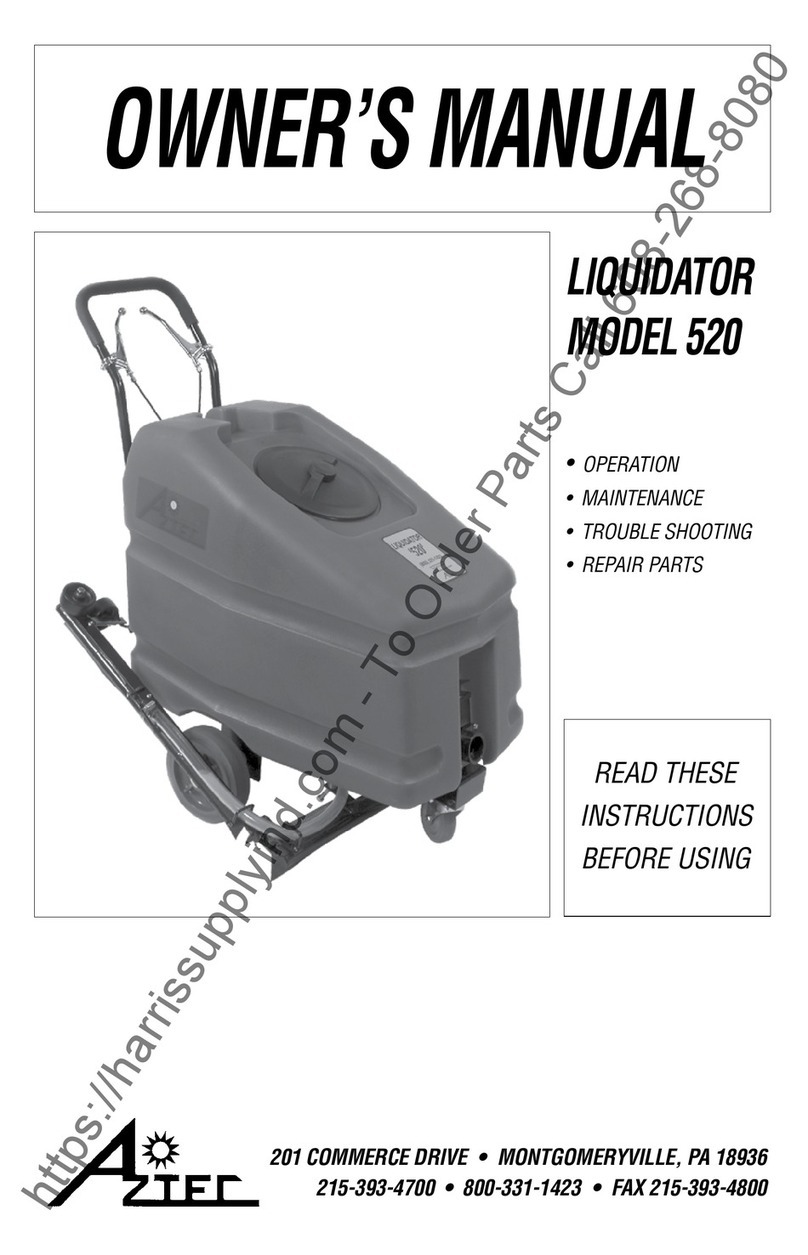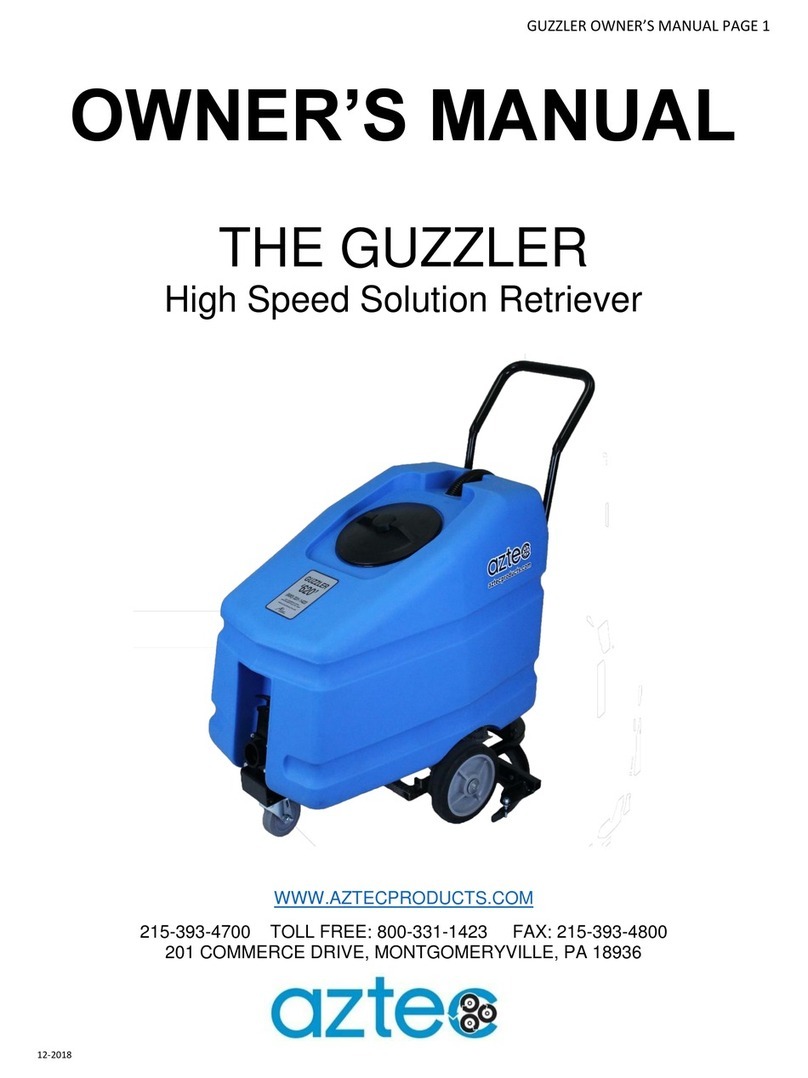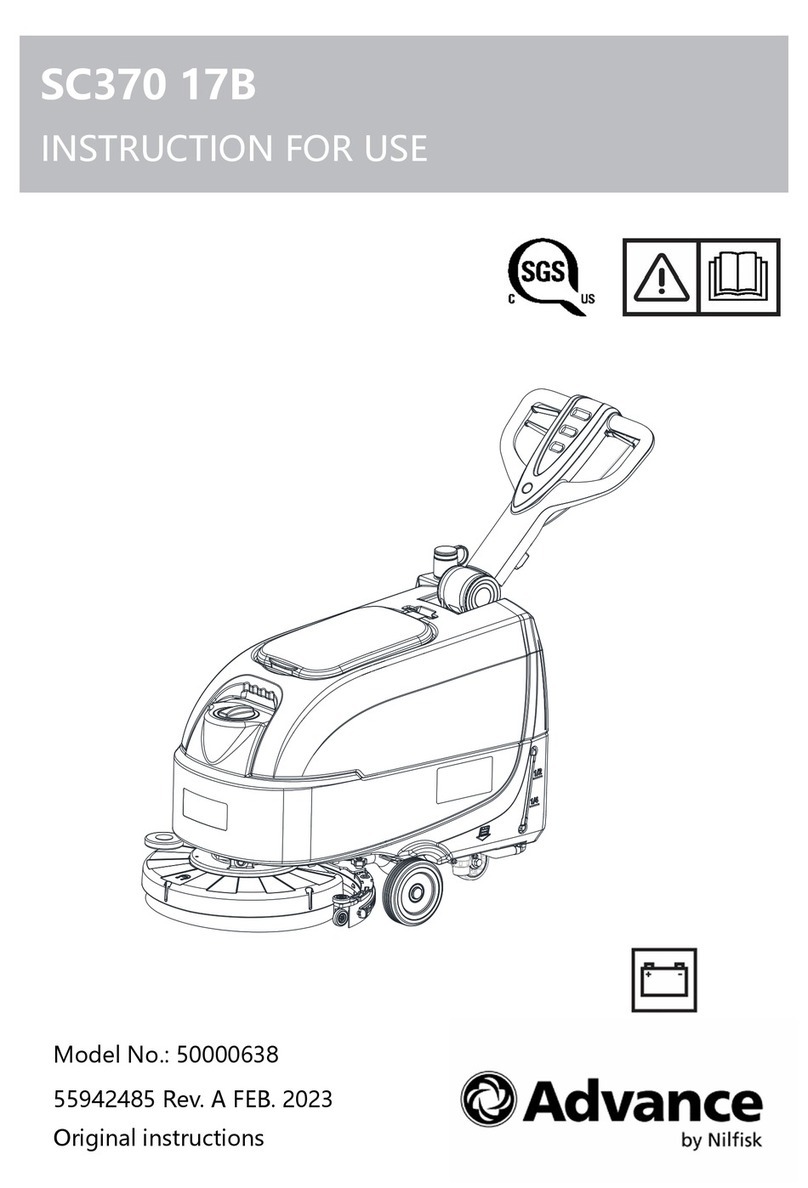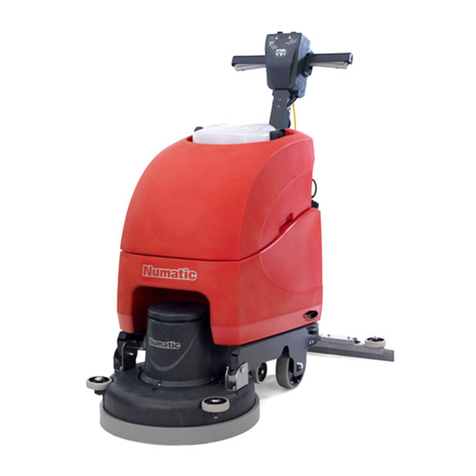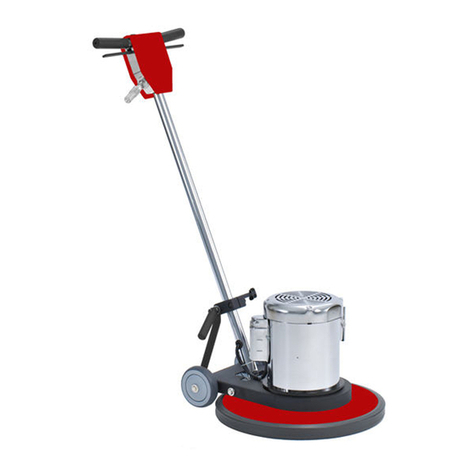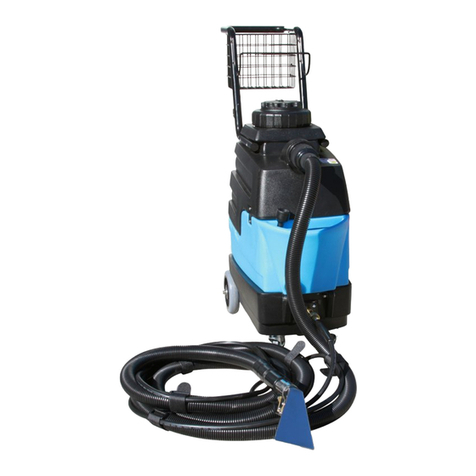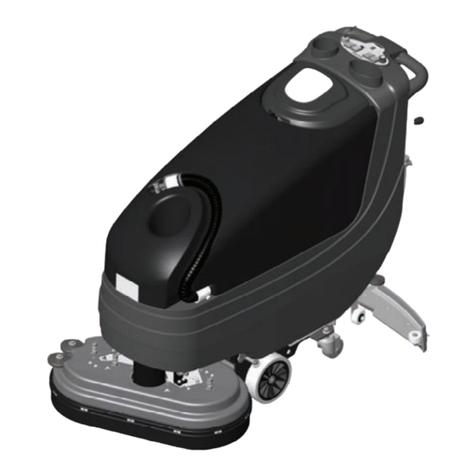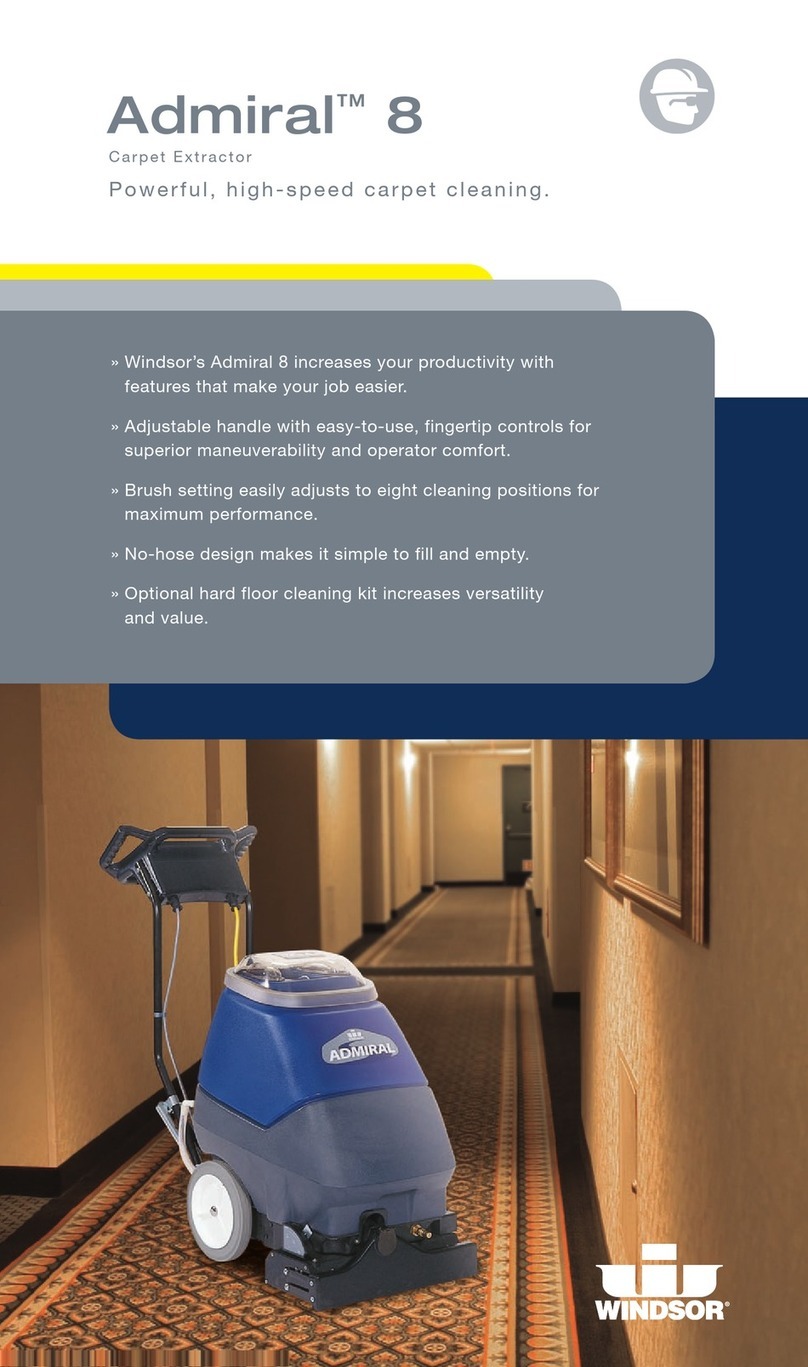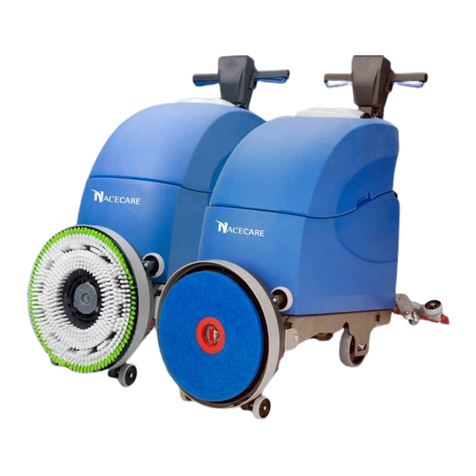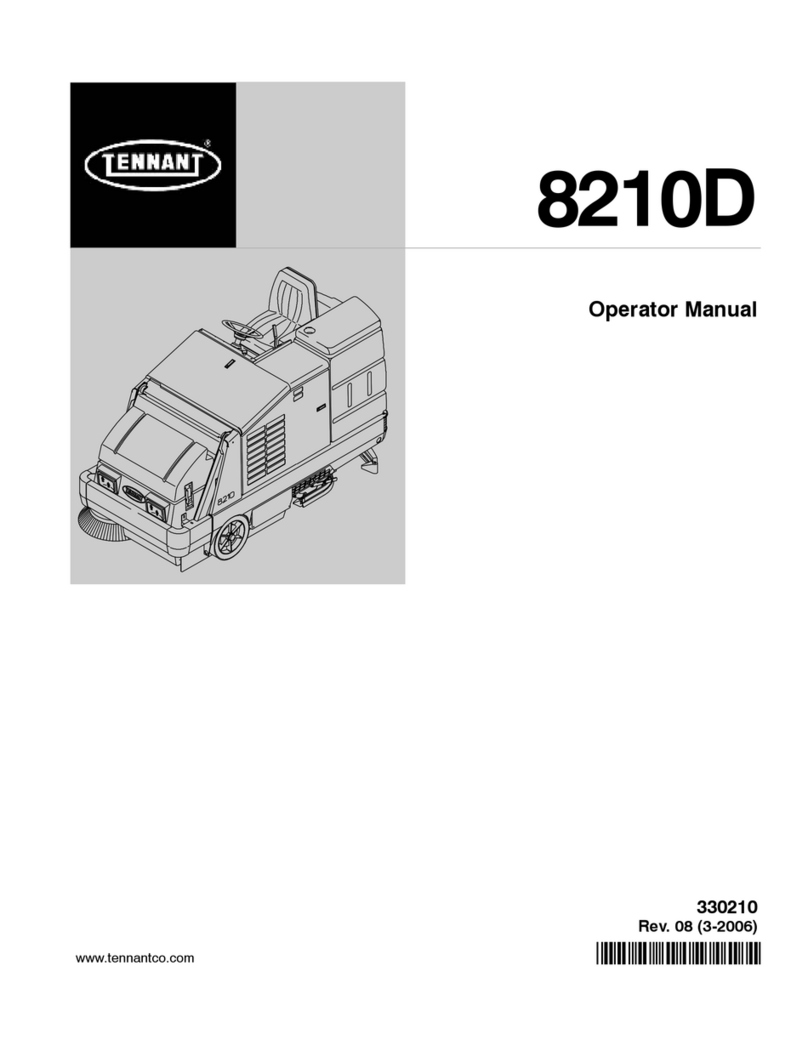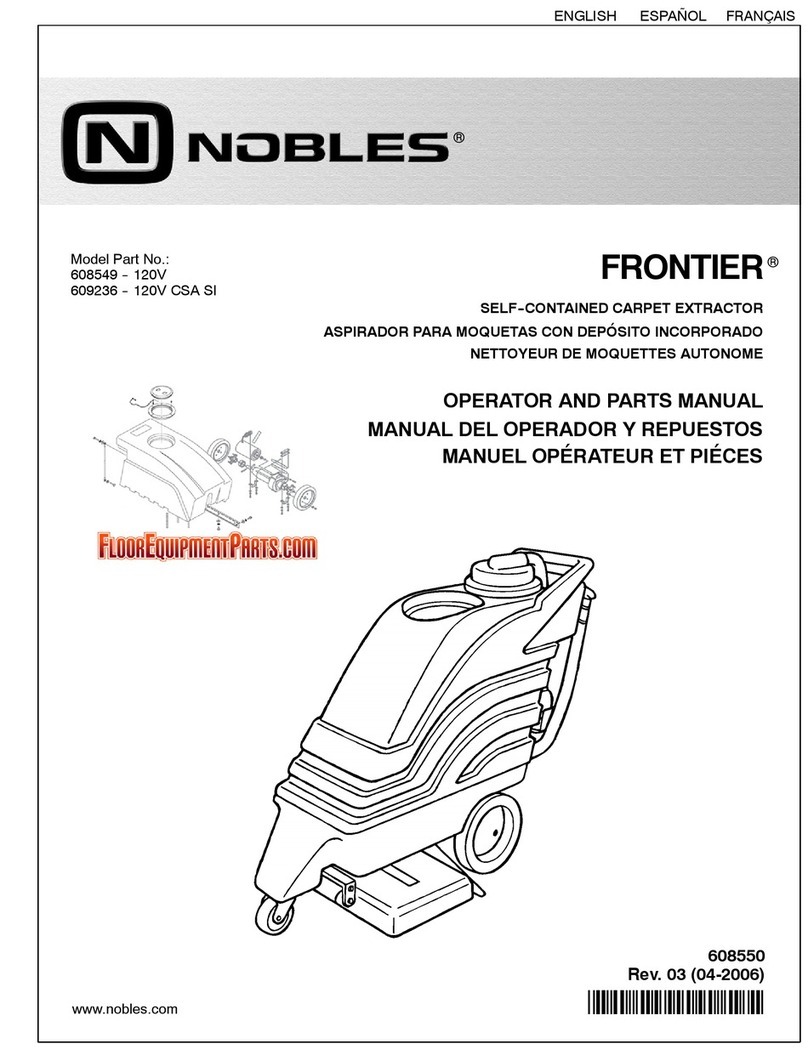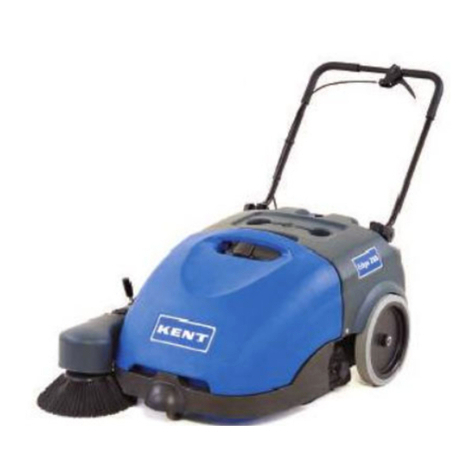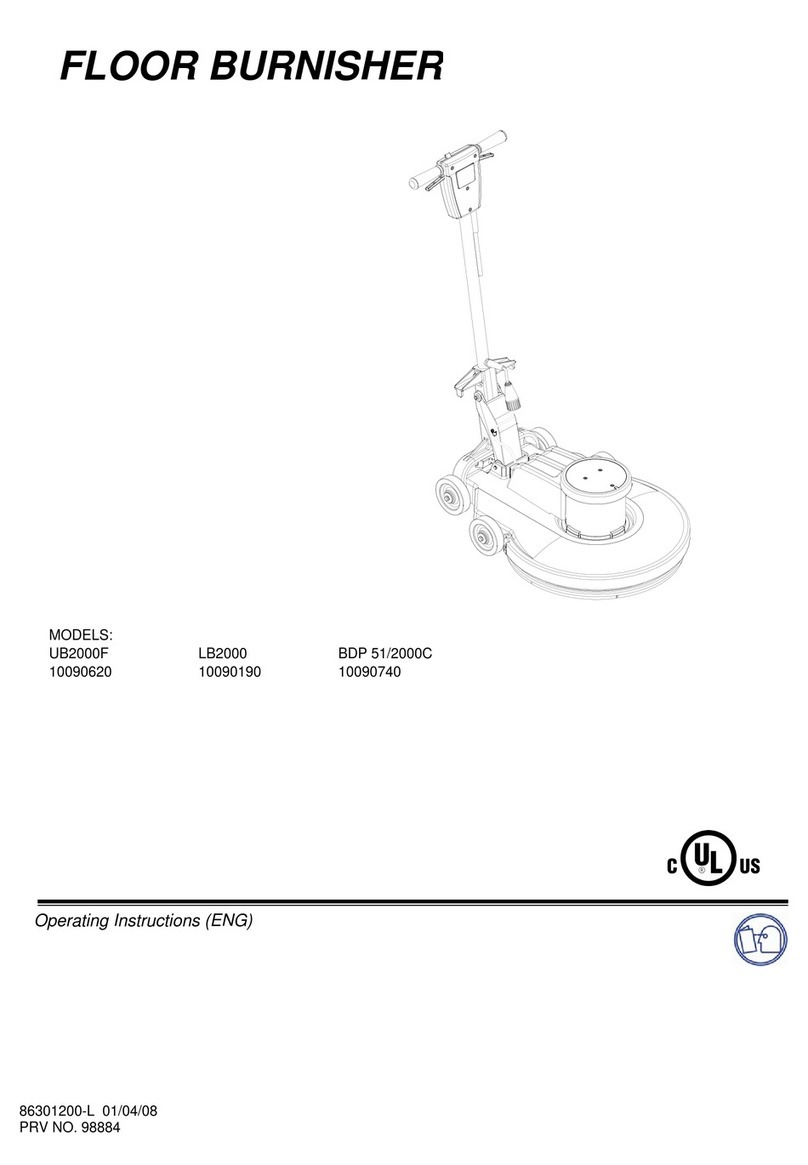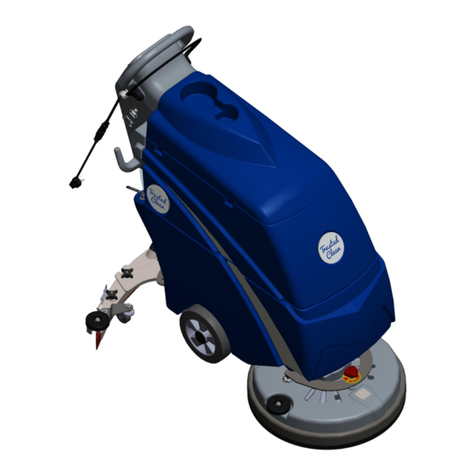Do not use “T” handle when attempting to tilt
back machine for service or cleaning. The
“T” handle is designed for control during
operation only.
Do not use excessive vertical pressure.
. PREPARAT ON
A. Check that the suggested maintenance
schedule has been observed:
All machines are equipped with a multi-function
maintenance meter. The functions include the
following: hour meter, service alert and tachometer.
(See Engine Maintenance Meter Instructions on p4).
B. Check the engine oil before every operation:
Make sure the machine is level when checking the
oil. Always take 2 readings of the dipstick before
adding oil. If the oil level is below the full mark, add
just enough oil to the engine to bring the oil level
up to the full mark. Never over fill. Follow the
guidelines in your Engine Owners Manual. Check
for foreign material on the dipstick.
C. Properly fill and check your LPG tank and
all LPG fuel lines for leaks:
1. Every tank has been pressure and leak
tested. owever, every time a tank is filled
and/or connected to the machine it should be
soap tested. All LPG lines must be pressurized
and every inch of line and connections must be
sprayed. If you find a leak, make the proper
repairs before operating the machine.
NOTE: The connection and disconnection of
the LPG tank must be done in a well ventilated
area with NO source of ignition within 10 feet
(3 meters) from the point of connection.
2. Never over fill the LPG tank! The LPG tank
is designed to hold just 20 pounds of propane.
Make sure to weigh the tank as it is being
filled. The gross weight of a full tank should
not exceed 48 pounds. If while operating the
machine, you notice frost forming on the LPG
lines or the regulator, your tank has been over
filled. If you continue to operate the machine
in this condition, damage will occur. The
excess propane in the tank must be removed
before normal operations resume. The
bleeding of a propane tank should be done in a
safe location outside the building. In some
cases the regulator must defrost before
restarting the engine.
D. Connecting the high pressure hose to the
LPG Tank:
Make sure the couplers are in line and screwed
together hand tight. If this is not done properly,
fuel will not pass through to the regulator. Never
complete the connection of the tanks to the
machine by using a wrench. Always do it by
hand. Listen for the rush of fuel to the lock-out
device when you open the tank valve. If you
hear this, it indicates a good connection has
been made at the tank.
NEVER CHANGE OR ALTER THE PROPANE
CONTROL EQU PMENT!
E. nstall fresh pads or brushes before every job:
To install a fresh pad, set the machine down in
the rear. Unscrew and remove the pad-centering
ring. Remove the old pad and center the new
pad onto the pad driver. Reinstall the pad-
centering ring. Never “flip” a pad. Keep the
same side down throughout the life of the pad.
Even after a pad is cleaned, you can tell the
down side by the centering ring indentation.
This practice will increase the pad life and help
maintain a properly functioning pad driver.
NEVER T LT A MACH NE ON TS S DE!
. START NG THE ENG NE
A. Open propane (LPG) tank valve (counter
clockwise).
B. Set throttle control at idle.
C. Battery start – turn key to the start position &
move throttle toward fast position. If engine
does not start, release key and return to step “B”.
D. Electric start – push “Start” button and move
throttle toward fast position until engine
starts. Starter should not be engaged for
more than 10 seconds at a time.
•When a propane tank is overfilled it may
temporarily cause the fuel regulator to
malfunction. Remove the tank to a well
ventilated location. Release some gas until
the cloud disappears and escaping gas is
“clear”. Reinstall tank.
• All machines are equipped with tamper
proof fuel systems. f a fuel problem
exists, contact an authorized service
center.
T E ANSWER PG. 3
PG. 14 T E ANSWER
NOTES
WARN NG
!
WARN NG
!
